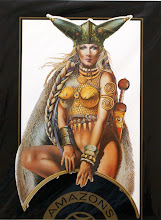Richad Hamel-Wedekind died whilst his son was still an infant and S. R. Hamel-Wedekind was raised by his mother in Hammersmith and Battle, Sussex. By 1911, Tempe had dropped her married name and was now called Boldero, her mother's maiden name and that of her uncle and aunt who had raised her following her mother's death.
Educated at St. Lawrence College, Ramsgate (1914-15), the now Stephen Richard Boldero trained at the Royal Military Academy and joined the Royal Regiment of Artillery in 1916 before transferring on a short service commission to the Royal Air Force, making Pilot Officer in 1921 and Flying Officer in 1922. He served part of his time in India, from whence he returned in 1924, relinquishing his commission in April 1925 due to ill-health. By then he seems to have been twice married, firstly to Nellie P. Woodley in 2Q 1916 in Steyning, Sussex, with whom he had a son, Alistair J. Boldero, in 1917, and secondly to Eleanor Winifred Wise in 4Q 1926 in Chelsea, Middlesex. The latter marriage ended in divorce in 1934.
Whether he had an artistic bent earlier in life is unknown, but he certainly turned to painting in the 1930s. The earliest trace of his artistic talents I have been able to find relates to the introduction of mobile recruiting offices, via which the R.A.F. hoped to recruit 31,000 men ahead of the (increasingly inevitable) war. A report in The Times (15 July 1938) describes them thus:
The outside decoration of the new type of van has been carried out in two contrasting shades of blue, with the R.A.F. concardes of red, white and blue in the lower panelling on either side of the body. Two chromium-plated show windows display, in colour, representations of life in the R.A.F. at home and abroad. They have been carried out, in cut-out form, by Mr. S. R. Boldero, who has served with the R.A.F. The inside of the van is equipped as an office.Boldero's cover artwork appeared regularly in the 1950s and 1960s, published by most of the leading paperback firms (Corgi, Digit, Arrow, Pan, Panther, Four Square, Consul). He also had a long association with Souvenir Press, producing numerous dust jackets.
Stephen Richard Boldero lived for many years (at least from 1957-82) at 39 Ranelagh Gardens, London W.6. He died in London in the summer of 1987, aged 89.
S. R. Boldero artwork for sale at the Illustration Art Gallery.
























